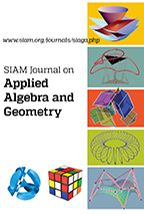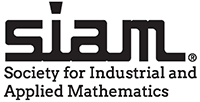| |
Supplementary Materials
Supplementary Materials
Authors are encouraged to submit Supplementary Materials to complement articles. SIAGA will consider unrefereed supplementary content as described below.
These may include additional figures or examples, animations, data sets used in the paper, computer code used to generate figures or tables, or other materials that are necessary to fully document the research contained in the paper or to facilitate the readers' ability to understand and extend the work.
Supplementary Materials are generally not refereed but will be available to referees as described further below. When a paper is published, the Supplementary Materials are linked from the main article webpage and will be clearly marked in SIAM Journals Online as unrefereed Supplementary Materials. They can be cited using the same DOI as the paper.
SIAM intends to maintain archives of Supplementary Materials but does not guarantee their permanent availability. SIAM reserves the right to remove Supplementary Materials from a published article in the future if they are found to be inappropriate or to violate copyright laws or software licenses.
Guidelines
- If authors submit more than one Supplementary Material file it's best to use a common compressed file format such as TAR, TGZ, RAR, or ZIP.
- Supplementary Materials must be submitted at the same time the article is first submitted (https://siaga.siam.org) or when requested by referees. They will be available to the editor and referees to inspect. The referees will be asked to give the materials at least a cursory look and verify that they are appropriate to accompany the article.
- Beyond this, Supplementary Materials are generally not refereed, but the referees or editor may suggest changes, including removing some extraneous Supplementary Materials or moving items from the main text to the Supplementary Materials.
- Supplementary Materials can be modified in accordance with these suggestions and resubmitted along with a revised manuscript in response to a round of refereeing.
- Once accepted for publication, Supplementary Materials cannot be changed unless reason is found to remove an item. If a significant error is found in any of the Supplementary Materials then the authors may submit errata to the journal, similar to what would be done for other errors in the paper.
- The authors must certify that they have the right to publish all Supplementary Materials and are not violating copyright or software licenses by doing so. Copyright of Supplementary Materials remains with the original copyright holder, not SIAM.
- An index of Supplementary Materials must also be submitted. Each item should be listed along with a brief description and a justification for why the item should be included. This index will be used by the editor and referees in judging the appropriateness, and the descriptions will also ultimately appear on the Supplementary Materials webpage available to readers. This html template should be used to create the index (right click and "save link or target as" to download: also available as a text file).
- If the Supplementary Materials contain additional figures or tables, it may be most convenient to combine these in a single PDF file. It is recommended that figures and tables be numbered S1, S2, etc. so they are distinct from numbering in the main article.
- The following file types are allowed for Supplementary Materials:
- Text/figures/tables/multimedia: TIF, JPG, GIF (including animated GIFs), PS, EPS, PSD, PDF, PPT, PPS, AU, MP3, WAV, MPG, AVI, MOV, TXT, and TEX.
- Computer code: should be contained within a common compressed file format such as TAR, TGZ, RAR, or ZIP.
- If a TAR, TGZ, RAR, or ZIP file is included in the Supplementary Materials, it is recommended that a corresponding TXT file also be included within that gives an index of the contents. This might be appropriate for a collection of computer codes, for example.
The linux command "ls -R1F < directory >" may be useful to generate a list of all files organized by subdirectory.
- Any computer code submitted with the Supplementary Materials should be a snapshot of the code used to obtain the published results. If the authors want readers to have access to later improvements of the code, it is suggested that the paper and/or Supplementary Materials contain a link to the external website or public code repository where the authors will maintain the code.
- Virtual machines (VMs) are a popular way to encapsulate the complete computing environment to accompany software, but are too large to be included as Supplementary Materials. Authors are encouraged to point to VMs available from other sites or on cloud computing platforms if they wish to indicate an environment on which their code runs.
- Other than prohibition of huge files such as virtual machines, there is currently no size restriction on Supplementary Materials.
Click HOME to continue.
|





